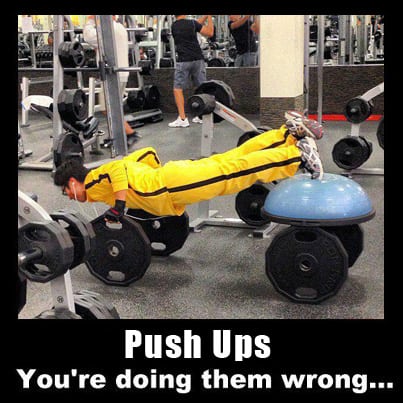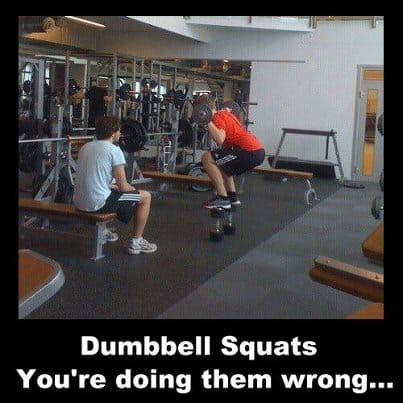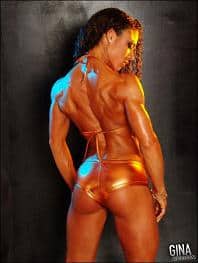Posts Tagged ‘technique’
Friday, September 8th, 2023
What Are Planks?
A simple plank is also called a front hold, hover, or abdomen bridge. This isometric exercise strengthens the core, abdominals, back, and shoulders muscles. While performing a plank your body should be straight, your back should not arch, and you should maintain balance with proper form. This is one of the best exercises for core, back, arms, shoulders, and glutes strength. It’s time to put on your best gritty core-training face and follow this simple guide to planking. Let’s begin!
(more…)
Tags: abdominals, planks, six-pack, technique
Posted in Exercise Technique | No Comments »
Thursday, January 16th, 2020
A squat is a strength training exercise working on glutes, hamstring, calves, and quad muscles and includes the hip, knee, and ankle joint. It is one of the best exercises for leg strength, building muscle in the lower body, and strengthening the core. Literally an entire encyclopedia can be written about the benefits of squatting and proper squat form. We will try to provide a simple squat guide that is simple and easy to digest.
(more…)
Tags: squat, technique
Posted in Exercise Technique, Weight Training | No Comments »
Monday, August 26th, 2019
How to Bench Press
Update: I found a sweet How to Bench Press video by elite powerlifter Dave Tate today. The video appears about halfway through this post. If you want to bench press for max strength and “think” you have perfect form, you NEED to watch this video. Therefore I am republishing this article today for every Swole Bench Presser’s benefit.
I get plenty of questions in various comments throughout the website, but I also get comments and questions via the Project Swole Contact Form.
Generally, I address those questions through e-mail, but often I do not have the time to reply to each and every question personally.
From now on I want to take a more proactive approach to answer Your Health Questions by posting them separately in the blog. This way we can be sure that everyone benefits from the Q & A.
Kyle wrote:
“Hey Steve, OK me and a friend got into an argument about how to bench. I said you should touch your chest and he said you shouldn’t because it can injure your shoulder you should stop like 1 inch away from your chest? What is the right way to bench?”
Response:
So, you want to know how to bench press properly?
The bench press is the most popular exercise in the gym among men. It is the strongest upper body exercise for most people and has been a social gauge (and wrongly so, in my opinion) of male strength and fitness for more than a century. Fortunately, bench presses are the #1 best exercise for building upper body strength and size, and so should be included in nearly all strength training routines.
On the downside, benching is responsible for many weight lifting injuries, especially in the shoulder area. Hopefully, this post will educate you as to how you should be bench pressing to avoid injury.
How to Bench Press
A concept of a bench press is simple:
Start by laying down on a bench. Place your hands on the barbell with your palms facing away from you (this is a pronated grip). Unrack the barbell and hold it straight up over your upper chest. Bend at the elbows to lower the barbell until it touches your mid-chest. Press it back up over your upper chest. That’s a rep.
In reality, using proper form on the bench press can be difficult to master, as you will see when you read this post in its entirety.
Now, to answer your questions…
(more…)
Tags: bench press, benching, chest, chest training, Conditioning, technique, weightlifting
Posted in Exercise Technique, Weight Training, Your Questions | 20 Comments »
Wednesday, July 24th, 2019
Along with the squat and bench press, the deadlift is one of the most common and useful strength training exercises. A deadlift requires muscles all over the body to perform. The arms, legs, core, and back are all strengthened by regularly performing increasingly heavy deadlifts. However, the deadlift can be of little benefit if one does not do it correctly, and without proper form, there is the risk of injury. You should always try to do what you can to improve your deadlift technique.
With these five tips, one should be able to perform deadlifts in a way that increases their strength with little chance of harm:
(more…)
Tags: deadlift, technique
Posted in Exercise Technique | No Comments »
Friday, November 24th, 2017
Too many times people throw themselves into an exercise routine with the expectation that if they heave as much weight as possible, enough times, they’re going to see the results they want. In reality, the result they’re likely to see is an injury that sets them back significantly in achieving their fitness goals.
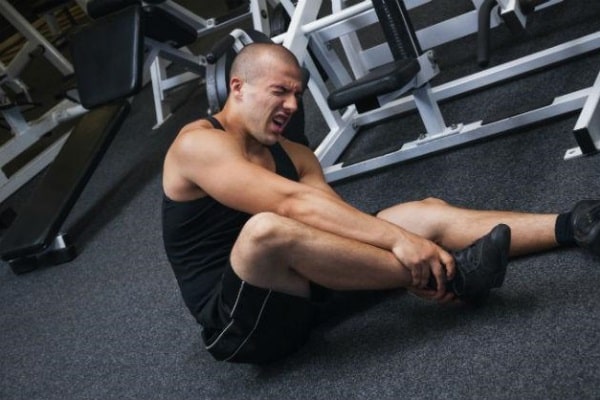
Whether you’re just starting out or finessing your current exercise routine, it’s essential that you always take the time to ensure you’re practicing proper form. If you don’t, you are cheating yourself by lessening the positive effects of your workout and opening yourself up to serious injury. Aside from maintaining proper technique as you build strength and flexibility, you should also focus on the nutrition your body needs to function, recover, and grow. (more…)
Tags: exercise, fitness, form, injuries, injury, lift weights, technique, weight lifting, weights
Posted in Exercise Technique | No Comments »
Monday, December 12th, 2016
Keeping Your Knees Healthy, Happy and Functional
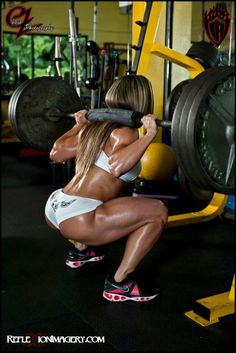 Are you experiencing unpleasant pain in the knee while training legs? In this article, we are going to tell you how to protect your knees from any unpleasant injuries as they are very common.
Are you experiencing unpleasant pain in the knee while training legs? In this article, we are going to tell you how to protect your knees from any unpleasant injuries as they are very common.
As you may already know, legs are one of the most important parts of the body, and it must be regularly trained, even though that it can be quite unpleasant from time to time. It’s not fun, and it’s painful to train legs, and that’s why many people neglect them.
For maximum effects, legs must be trained heavily until exhaustion. A serious injury in the area of the knees can stop your muscle growth and prevent you from training properly.
Here are some tips shared by experts in the industry:
(more…)
Tags: exercise, fitness, healthy knees, injuries, injury, knee injury, leg training, legs, Sports, technique, wheels
Posted in Exercise Technique, Injuries | No Comments »
Tuesday, June 21st, 2016
How to do Dips
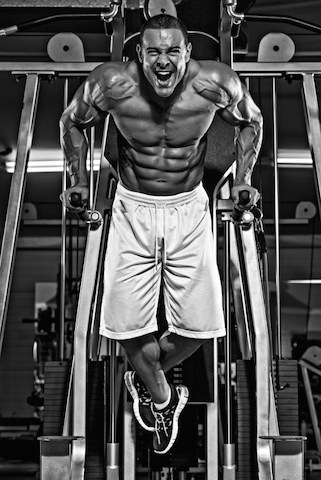 Dips are listed in a previous post as one of the top 5 best triceps exercises. They can be useful for both chest and triceps training.
Dips are listed in a previous post as one of the top 5 best triceps exercises. They can be useful for both chest and triceps training.
Based on the principle that exercises in which you move your body through space are better than the exercises that keep you in a stationary position, dips are actually better than push ups. It is also easier for you to add weight to your dips than it is to add weight to a push up.
What are Dips?
Any exercise where you use your triceps to elevate your body is a dip.
To execute a traditional parallel bar dip, find a set of parallel bars and climb up. Start at the top position with your arms straight, elbows locked and body hanging in space. Lower your body until your shoulders are parallel to your hands, then push yourself back up to the top, stopping just short of lockout.
In this post I want to discuss how to do dips the right way, several variations of dips, how to do dips if you can’t do dips, and what to watch out for when first learning how to dip.
(more…)
Tags: dips, exercise, how to, technique, tricep, tricep training, triceps
Posted in Exercise Technique | 7 Comments »
Friday, July 24th, 2015
Don’t Waste Time Training Legs the Wrong Way!
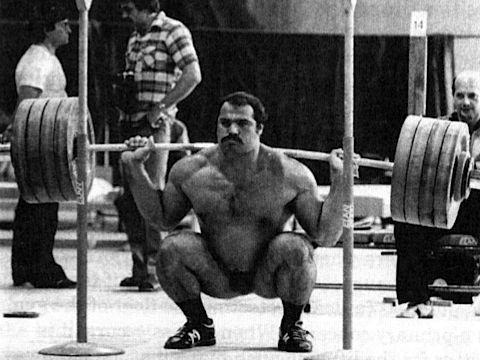
Your legs are the foundation of your physique. With their bulging tear drops, incision-like cuts, and shredded striations, prize leg development can win you a contest. Lagging leg development can also lose you a contest. Additionally, having strong legs makes it that much easier to develop a strong upper body. Here are 6 mistakes most athletes make when training their legs. These tips apply both to active bodybuilders and newbies, so pay attention!
The Top 6 Leg Training Mistakes
-
Not Training Legs At All
A lot of people completely avoid leg training. Why? Personally, I find it hard to understand. But there’s obviously a reason why they do; theories are they already have some preconceived notion that their legs are developed beyond what they are in actuality, or they see leg training as “hard”.
It’s true that leg training can be painful, and you generally are sore afterwards, but many bodybuilders grow to love that soreness, as with other muscles. Avoiding leg training is a critical mistake, and you can’t build a house without a foundation.
(more…)
Tags: exercise technique, hamstrings, leg training, legs, mistakes, myths, quads, squats, squatting, technique, Weight Training, weightlifting
Posted in Bodybuilding, Exercise Technique, Fitness Tips, Weight Training | 8 Comments »
Monday, July 20th, 2015
How to Perform Squats
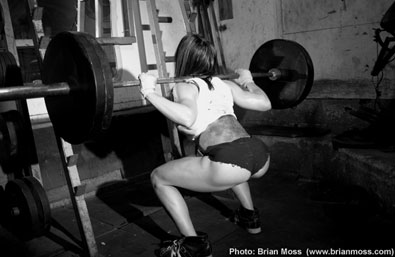 There are many different lifts that a weightlifter can do to increase their strength, speed, and power. All kind of weightlifting is great for your body, but I prefer to not waste time in the gym lifting with tunnel vision, going from machine to machine and seeing little results from my hard work.
There are many different lifts that a weightlifter can do to increase their strength, speed, and power. All kind of weightlifting is great for your body, but I prefer to not waste time in the gym lifting with tunnel vision, going from machine to machine and seeing little results from my hard work.
Instead, I would rather do 3-4 exercises with maximal intensity to wipe out my whole body in order to reap a maximal anabolic effect. The most well known and most dreaded of these exercises is the squat.
Rules to remember when squatting:
- Keep the lower back straight and mostly flat; do not round your back!
- Keep knees pointing out slightly, do not let them creep inwards as you push yourself up.
- The bar should rest on upper trap muscles and the rear heads of the shoulders.
- Push from your glutes (butt), not your knees; your hips should raise first and everything else should raise with them.
- Fill your stomach with air before descending and keep it tight with your chest out while pushing up.
- Push up with your eyes focused 30-45 degrees above normal eye level.
- Try to keep your knees behind your toes to avoid injury.
(more…)
Tags: Conditioning, leg training, legs, squats, technique, weightlifting
Posted in Exercise Technique, Weight Training | 8 Comments »
Tuesday, May 28th, 2013
How NOT to Squat
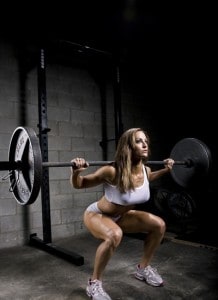
8-time Mr. Olympia Ronnie Coleman said it best: “shut up and squat.” [1] After all, there’s nothing better for building lower body mass. Squats force you to use numerous stabilizing muscles and exhaust hamstrings, quads, and glutes.
To get the most out of squats, however, they must be executed with correct form. Avoiding these common squat mistakes will take both your performance and physique to the next level.
Mistake #1: Not Engaging Your Core
The core is the body’s center of gravity and is where movement originates. [2]If you have a weak core, it will be much harder to keep the weight stable. It also places you at a greater risk for hip or lower back injury.
To properly engage your core when performing a squat, concentrate on sucking your belly button towards your spine. A strong core will be able to maintain this posture throughout the exercise. If you have a weak core, using a weight belt around the waist protects the spine and keeps you from relaxing the core.
(more…)
Tags: exercise, fitness, legs, squat, squats, squatting, technique, weight lifting, Weight Training, weightlifting, workout
Posted in Exercise Technique, Fitness Tips, Weight Training | No Comments »
Sunday, January 6th, 2013
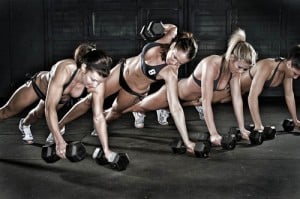 If you are the type of person who enjoys physical fitness, then you’ve no doubt tried several different types of exercise, from basics like jogging, cycling, and swimming, to instructional classes in yoga, Pilates, and step aerobics, to workout DVDs for P90X or Insanity. But if you’re looking for an up-and-coming exercise regimen that is going to continue to challenge you for a while, then perhaps Crossfit should be on your radar.
If you are the type of person who enjoys physical fitness, then you’ve no doubt tried several different types of exercise, from basics like jogging, cycling, and swimming, to instructional classes in yoga, Pilates, and step aerobics, to workout DVDs for P90X or Insanity. But if you’re looking for an up-and-coming exercise regimen that is going to continue to challenge you for a while, then perhaps Crossfit should be on your radar.
The only real caveat with this intense form of exercise is that it is all too easy to injure yourself if you’re not careful. Since you are pushing yourself to your physical limits with timed circuits that require you to fit as many reps into the allotted time as possible, you’ll find that you tire long before you’re through. So it’s not only important to know your limits, but also to observe proper form in every exercise. Here’s why.
(more…)
Tags: Crossfit, exercise, fitness, form, health, safety, technique, workout
Posted in Conditioning, Exercise Technique, Fitness Tips, Injuries | No Comments »
Wednesday, May 4th, 2011
Along with pull ups, rowing is one of the best exercises to train the back. The king of rowing exercises is the standing barbell row, but the problem is that too few people perform them properly.
You might see the following common technique flaws in people executing barbell rows:
- standing upright – you gotta bend over just short of 90 degrees
- rounded back – lower back weakness or hip tightness can cause this
- momentum – using the lower back, glutes, and hamstrings for momentum
You can fix all of these issues by changing your barbell row into an inverted row. The inverted row is not a perfect replacement for the barbell row – it removes posterior chain stabilization from the movement and limits the load you can use – but it is a suitable replacement if you need one, and believe it or not it gives us yet another reason to accept the existence of the Smith Machine… OK, maybe not.
Let’s find out why and how to use inverted rows in our training routines.
(more…)
Tags: back, back muscles, back strength, back training, exercise, exercise technique, fitness, inverted rowing, inverted rows, rowing, rows, technique, workout
Posted in Exercise Technique, Weight Training | 2 Comments »
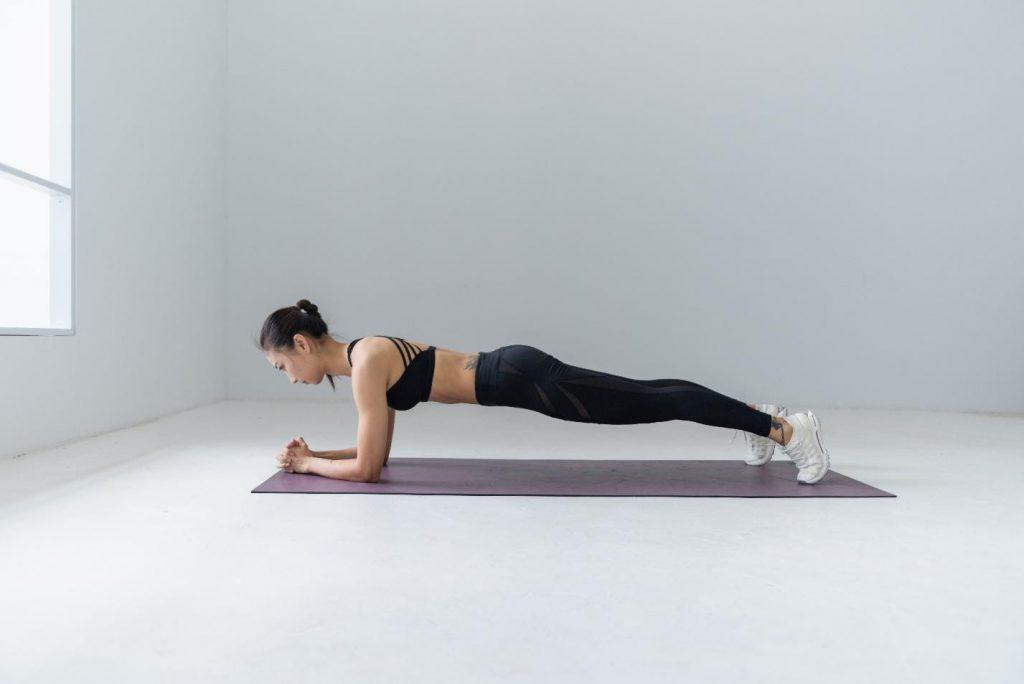




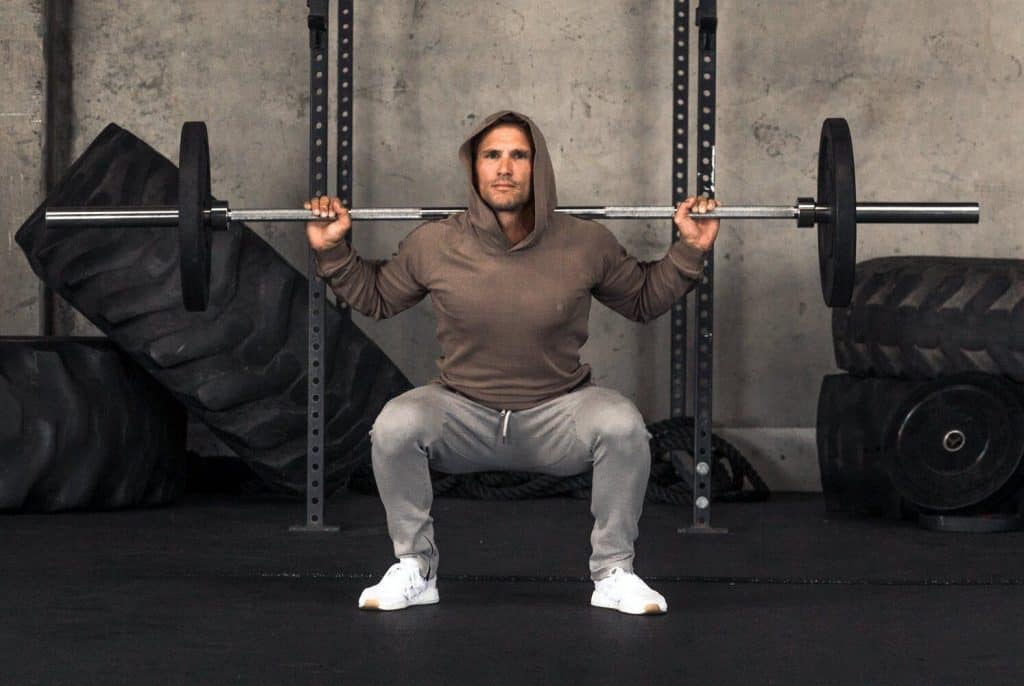

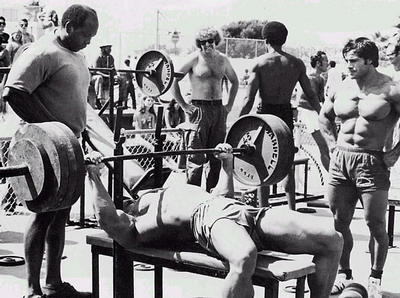
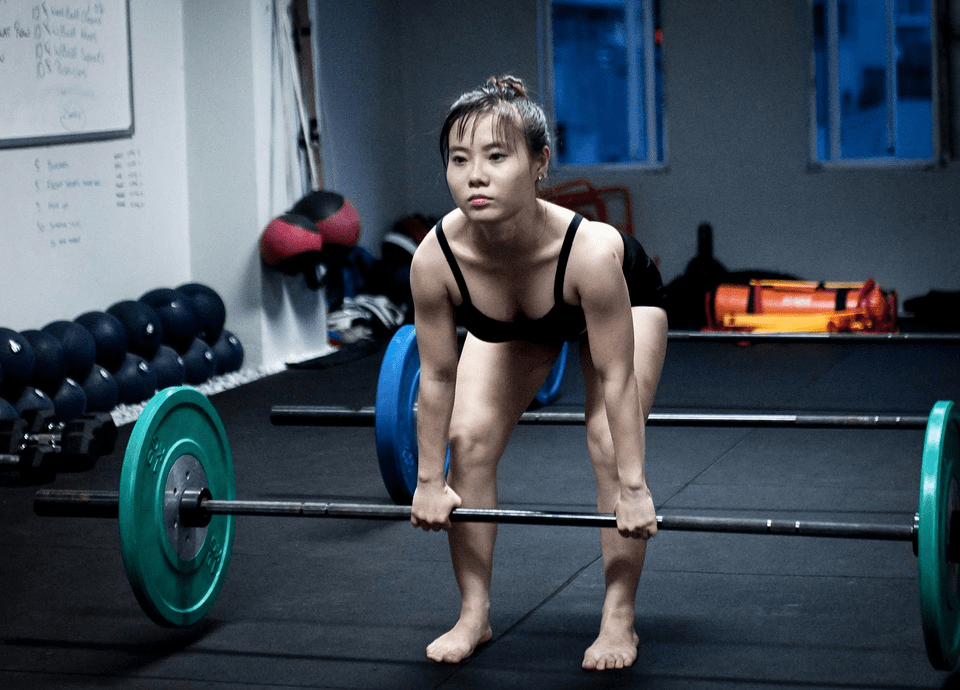

 Are you experiencing unpleasant pain in the knee while training legs? In this article, we are going to tell you how to protect your knees from any unpleasant injuries as they are very common.
Are you experiencing unpleasant pain in the knee while training legs? In this article, we are going to tell you how to protect your knees from any unpleasant injuries as they are very common.  Dips are listed in a previous post as one of the top 5
Dips are listed in a previous post as one of the top 5 
 There are many different lifts that a weightlifter can do to increase their strength, speed, and power. All kind of weightlifting is great for your body, but I prefer to not waste time in the gym lifting with tunnel vision, going from machine to machine and seeing little results from my hard work.
There are many different lifts that a weightlifter can do to increase their strength, speed, and power. All kind of weightlifting is great for your body, but I prefer to not waste time in the gym lifting with tunnel vision, going from machine to machine and seeing little results from my hard work.

